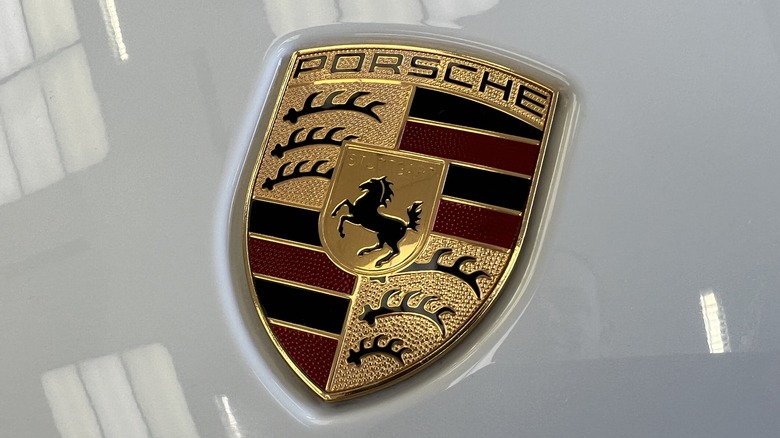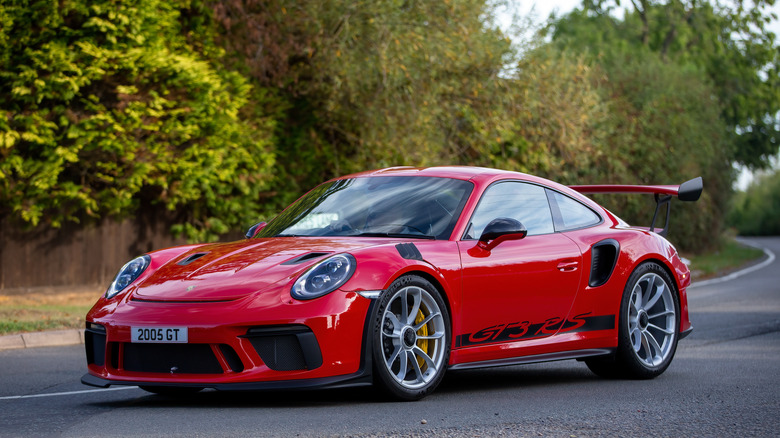Is The Porsche Emblem Real Gold? Here's What It's Made Of
The German automaker Porsche is steeped in history, dating back to its 1931 conception by Professor Ferdinand Porsche. By 1948, the professor's son, Ferry, who had worked alongside his father, released the first Porsche car, the Type 356.
But every brand needs an iconic, recognizable symbol that differentiates it from competitors — and all the better if it encapsulates its history, and its creators' philosophy. This is especially important in the high-end luxury sports car market, where one look at the front insignia can identify a vehicle's maker in seconds. A fitting example is Lamborghini's emblem of a bull, associated with the Italian automaker since the early 1960s. (Often, recognizable brand designs have an interesting origin, like the real-life inspiration behind Maserati's famous logo.)
Porsche's emblem began in response to a U.S. importer requesting a company symbol, and Ferry Porsche commissioning Franz Xaver Reimspieß to create one. A horse rearing up on two legs at the center of the design borrows from the city seal of Stuttgart, Porsche's headquarters. Behind the horse are the four sections divided into red and black stripes, and antlers, which both have significance as they are elements found in the crest of Württemberg-Hohenzollern (the short-lived state in West Germany following World War II whose capital was Stuttgart).
But does the automaker incorporate real gold into the design? Yes, each emblem is gold-plated – and every element of the crest holds meaning.
The significance of gold plating and what the emblem's elements symbolize
Every aspect of the Porsche crest is symbolic. To begin with, gold is generally thought to indicate benevolence and high-mindedness. In the case of Porsche, the gold also represents luxury.
But the symbolism doesn't end there. The inclusion of antlers has historically stood for power and perseverance. The horse so prominently displayed in the center represents Stuttgart, a word derived from combining "stuoten," which means stud, and "garten," or garden). Stuttgart which is home to Porsche, has included a horse on its coat of arms for hundreds of years, as the city was known for its horse breeding. Historically, horses have also symbolized preparedness in terms of duty to one's leaders and country.
To further drive home the notions of quality and attention to detail, Porsche makes each badge by hand, and has since the early '50s. The emblems were also tested by the automaker to ensure they could endure the rigors of the road. Porsche took the crests to a ballistic firing range and carried out tests meant to determine how the emblems would hold up against impacts from rocks. The iconic badge held strong throughout the testing and continues to emblazon the front of fast, luxurious Porsches to this day.

